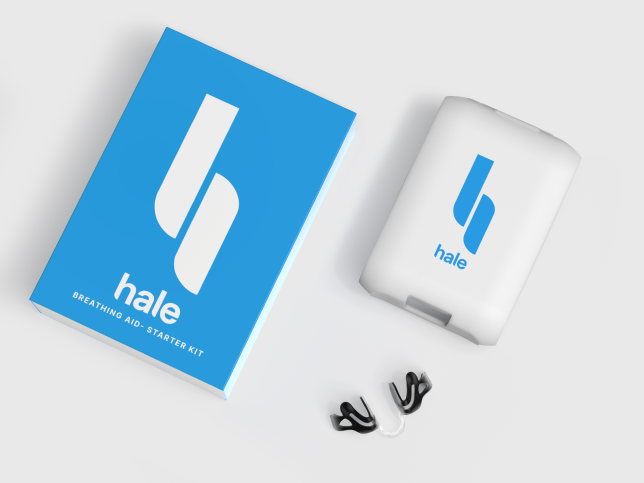
Dr. Taha Z. Shipchandler, MD, FACS, Division Chief of Facial Plastic and Reconstructive Surgery at Indiana University School of Medicine, specializes in advanced nasal surgery and the treatment of nasal breathing problems. Since joining the faculty in 2010, after training at Johns Hopkins and Cleveland Clinic, he has become a leading figure in the field. Dr. Shipchandler performs over 300 nose operations each year, focusing on improving both function and appearance. He leads the Facial Cosmetic Center, offering comprehensive care for patients with cosmetic and functional nasal concerns.
In a revealing discussion, Dr. Taha Z. Shipchandler, MD, FACS, offers a fresh perspective on nasal obstruction treatment. Dr. Shipchandler emphasizes that while nasal surgery has transformed many lives, it's not a one-size-fits-all solution. He explores the complexity behind nasal breathing issues, highlighting various causes and the potential of non-surgical alternatives for those seeking relief. This conversation sheds light on the importance of a tailored approach in treating nasal obstruction, moving beyond the conventional surgical narrative. Dr. Shipchandler's insights reveal the necessity of considering individual patient needs, stressing that improved nasal airflow and quality of life can often be achieved through personalized, non-invasive strategies. For anyone navigating nasal breathing difficulties, Dr. Shipchandler's expertise underscores the value of exploring a broad spectrum of treatments to find the most effective pathway to better health.
Interviewer: Let's start with your background. What sparked your interest in nasal surgery and facial plastic surgery?
Dr. Taha: Well, it’s fascinating to work with the face and the senses. Breathing problems, like when you’re stuffed up, can be miserable. I learned that nasal breathing is more energy-efficient and beneficial for health than mouth breathing. The combination of healthcare with the aesthetic aspect of the face drew me to otolaryngology and eventually to facial plastic surgery because the face is the first thing people see in the morning, and I wanted to help people with that.
Interviewer: What exactly causes nasal obstruction and how common is it among your patients?
Dr. Taha: Nasal airway obstruction is typically caused by either anatomic issues—like problems with the turbinates, septum, or sidewall collapse—or by inflammatory conditions. Anatomic issues are generally treated surgically, while inflammation is treated medically with medications, sprays, and sometimes antibiotics. The condition is quite common, affecting roughly 60-70% of people in the U.S. and globally. Many don't seek treatment until they realize what it's like to breathe well, which can be life-changing.
Interviewer: How does aging affect nasal obstruction in your patients?
Dr. Taha: It affects all ages. Younger patients might come in with a crooked septum due to recent trauma, while older patients may have had minor injuries from childhood that worsen over time. As we age, our tissues, including cartilage, become weaker. This natural aging process can exacerbate nasal obstruction that stems from past injuries, even leading to conditions where patients have to physically manipulate their facial features to breathe better at night.
Interviewer: What are some common misconceptions about nasal surgery?
Dr. Taha: People often think nasal surgery will completely resolve their breathing issues, but we can’t make the nose like a piece of steel. While we aim for 100% improvement, realistically, we might achieve significant improvement without completely strengthening the sides of the nose. There's a balance between improving nasal breathing and maintaining a pleasing appearance. Some patients are hesitant about changes to their nose's shape, which can be a necessary part of the surgery to enhance breathing.
Interviewer: Are there non-surgical treatments available for nasal obstruction?
Dr. Taha: Yes, there are non-surgical options like Latera, which involves placing an absorbable implant into the nasal wall, and Vivaer, which uses low-temperature radiofrequency to remodel the nasal wall. These can be good for patients who cannot undergo surgery. Additionally, products like the Breathe Right Strip can provide temporary relief, but some patients develop a skin reaction to the adhesive over time.
Interviewer: How do you go about evaluating a patient for nasal surgery?
Dr. Taha: Evaluation is comprehensive. I start by asking what the patient currently does to help with nasal breathing. I observe their breathing patterns and perform an internal examination, looking at the septum, turbinates, and the intersection of the septum with the nasal sidewall. I also use a technique to simulate the effects of surgery and gauge the potential improvement in breathing. This helps determine the surgical approach.
Interviewer: Can nasal obstruction reoccur after surgery?
Dr. Taha: After successful surgery, the improvement should last for many years. However, as we continue to age, the effects of gravity and tissue laxity will still play a role, potentially leading to a recurrence of obstruction symptoms over time.
Interviewer: What's the impact of nasal obstruction on overall health, and how does surgery help?
Dr. Taha: Nasal obstruction significantly affects daily life and health. Improved nasal breathing can enhance exercise performance, sleep quality, and potentially, although not yet definitively proven, reduce the severity of obstructive sleep apnea. Some of my patients have even been able to decrease their reliance on CPAP machines post-surgery.
Interviewer: With the advancements in nasal surgery, what improvements have been made for patients?
Dr. Taha: We’ve come to understand the importance of addressing the nasal valve and sidewall collapse, not just the septum and turbinates. This focus has led to better surgical outcomes and a higher success rate in treating nasal obstruction.
Interviewer: Any final advice for patients considering nasal surgery?
Dr. Taha: Nasal surgery can greatly improve your life by enhancing nasal airflow. Trying non-surgical options like the HALE device might be a good step to see if the improved airflow is what you're looking for. These devices can be especially useful at night or during physical activity. Ultimately, a discussion with your doctor about the best options for your specific case is crucial.
